Building History and Museum Map
Map Legend
1. Snyder House – Site Office, Gift Shop, Tourism Info
2. General Store
3. Jumbo Valley Knox Presbyterian Church – Intro Video, Wheelchair Accessible Bathroom
4. Andrews Log House
5. Ashvale School
6. Crystal Village
7. Victory Garden
8. Cyr House
9. Threshing Camp
10. Bicycle Shop
11. Trappers Cabin
12. Zoeteman-Vogelaar Dairy Barn – Short Horse Culture Video
13. Main Display Building
14. Stationary Engine Display
15. Allan Reed Shop & Gifford’s Quonset
16. Concession Building – Food Services during Events
17. Heritage Display Building
18. Summerview Hall – Bathrooms
19. Sawmill
20. Heritage Station – Bathrooms
21. Blacksmith Shop
22. Woodworking Shop
23. Doukhobor Barn
24. Grain Elevator – Short Grain Elevator Video
25. Windmill
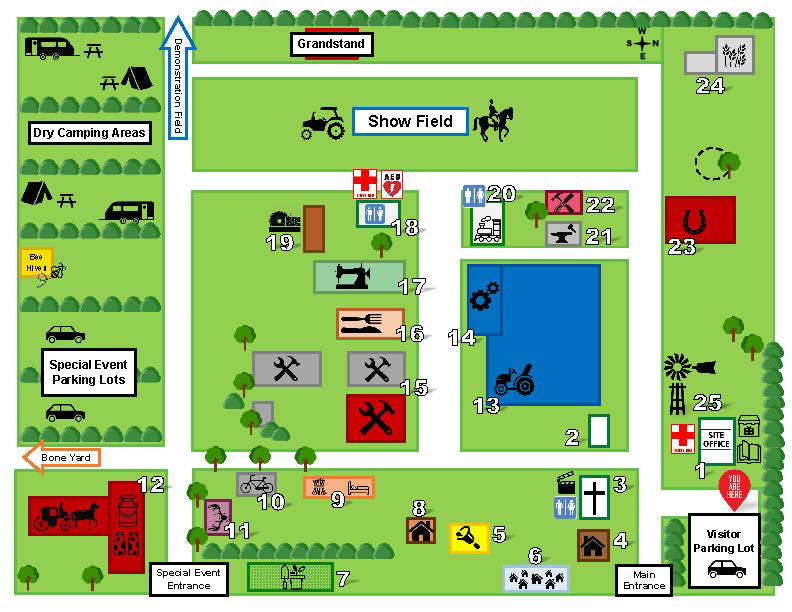
Download our Visitor Self-Guided Tour Pamphlet.
ABOUT US
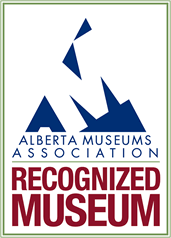 Heritage Acres Farm Museum is an open-air, 180-acre site full of antique equipment and artifacts. It was established in 1988 after the Oldman River Dam was built and is currently operated by the Oldman River Antique Equipment and Threshing Club. This club is dedicated to promoting education and interest in preserving the history and heritage in Southern Alberta’s agricultural industry, from 1880-1960. Members of the Oldman River Antique Equipment and Threshing Club are often seen around the site restoring machinery and buildings. These folks have volunteered thousands of hours of their time to paint buildings, organize events, and rehabilitate rusty machinery into fully mobile, working exhibits.
Heritage Acres Farm Museum is an open-air, 180-acre site full of antique equipment and artifacts. It was established in 1988 after the Oldman River Dam was built and is currently operated by the Oldman River Antique Equipment and Threshing Club. This club is dedicated to promoting education and interest in preserving the history and heritage in Southern Alberta’s agricultural industry, from 1880-1960. Members of the Oldman River Antique Equipment and Threshing Club are often seen around the site restoring machinery and buildings. These folks have volunteered thousands of hours of their time to paint buildings, organize events, and rehabilitate rusty machinery into fully mobile, working exhibits.
A recent addition to Heritage Acres is the 2020 Victory Garden project, which will provide approximately 500-600 potatoes and 1,000-2,000 carrots for local food bank donations. That’s right, 100% of the harvest bounty will be donated to families in Pincher Creek! We encourage visitors to get involved, and help weed the garden during the summer, to support us and the community with this project.
A significant number of relocated heritage buildings, restored farming supplies and equipment, and all sorts of antiquities are on site for all to admire. Take a look at the map for locations and further history on all the buildings!
Give yourself lots of time to enjoy all that Heritage Acres has to offer.

![]() 1. Snyder House One of the first buildings to be moved to Heritage Acres was the Snyder House. The house was built in 1909 and was displaced because of flooding from the Old Man Reservoir. The home served the Snyder family as the primary residence on their ranch. The Snyder’s relocated to Pincher Creek, but have visited the home many times. Several very vivid encounters with ghosts have been reported by a family who lived in the home after it was first relocated to Heritage Acres. First Aid is located here. The Snyder House is utilized as the museum’s gift shop and administration office.
1. Snyder House One of the first buildings to be moved to Heritage Acres was the Snyder House. The house was built in 1909 and was displaced because of flooding from the Old Man Reservoir. The home served the Snyder family as the primary residence on their ranch. The Snyder’s relocated to Pincher Creek, but have visited the home many times. Several very vivid encounters with ghosts have been reported by a family who lived in the home after it was first relocated to Heritage Acres. First Aid is located here. The Snyder House is utilized as the museum’s gift shop and administration office.
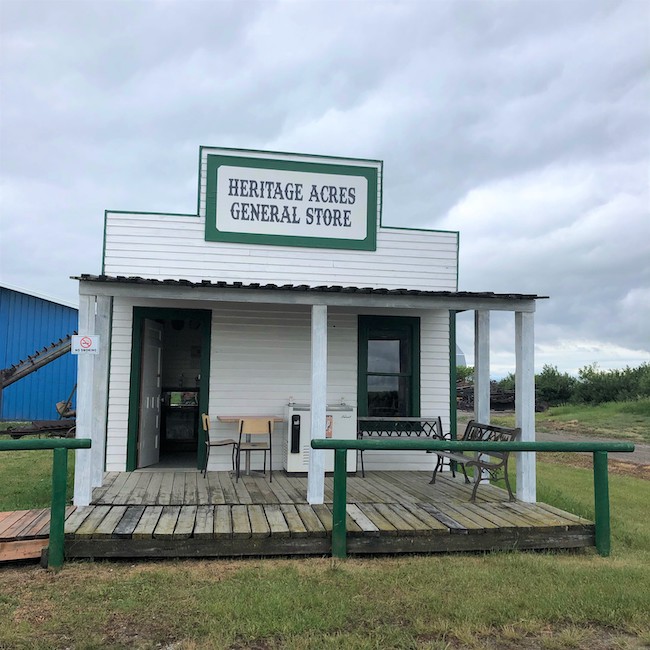
2. General Store This little building was originally used as a bunkhouse on the Milne Farm near Claresholm. It was moved on site in 2002 and remodelled to be used as a general store. Inside are numerous incredible artifacts like books, calendars, kitchen supplies, vintage apparel, toys, and much more. Located across from the Church.

3. Jumbo Valley Knox Presbyterian Church This church was built in 1917, formerly located east of Granum. It was relocated to Heritage Acres and is still used for church services on special occasions. The pews, cross, and organ are all original and it seats 100 people. This church served the Granum area for more than 80 years. Guests will notice the singular window on the west side, while there are four on the east side. A local hit ice on Highway 519 in front of the church on a cold, frosty night and spun off the road crashing into the west side of the church, just missing the organ. The three final hymn numbers still rest on the hymnal board. In the back of the church is the Heritage Arts Centre, put together in 2019 for local craftspeople to display and work on projects. A wheelchair accessible bathroom is available in this building. Located across from the General Store.

4. Andrews Log House In 1906 and 1907, Burberry “Dick” Andrews, an English immigrant, worked as part of the team of engineers that designed and constructed the bridge in Lethbridge. Upon completion of the bridge, Mr. and Mrs. Andrews and their young family moved back to the homestead west of Claresholm. A local rancher, Cecil “Dick” Andrews (their son) built this log house 1942, and the property was sold to the Waldron Ranch in 1974. The log house was moved to Heritage Acres in 2008. This is a good example of an early prairie ranch house. When first moved to Heritage Acres the house had electricity, but it was removed to suit the time period the house was built in. The porch on the back was added on by volunteers at Heritage Acres. Located behind the Church.
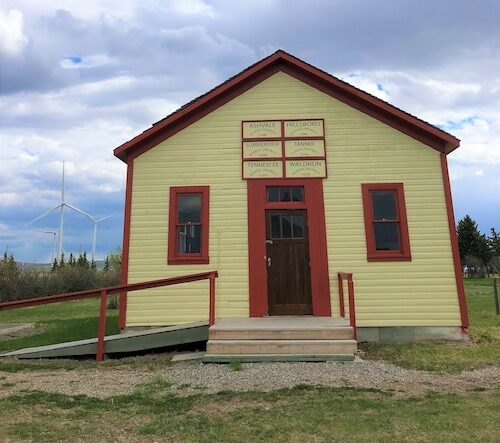
5. Ashvale School This is a typical prairie school building. It was moved in 1990 from the Porcupine Hills where it served (on and off) from 1909-1959 as a school. It was later used as a Recreation Hall. The original desks, chalkboard and school books are still inside. Students would walk, ride horses, or drive wagons to school every day. In the winter time, one of the older students or the teacher would have to go into the school really early in the morning to light the fire so it was warm and ready for the day. When inside the school you will see many pictures of local residents who attended Ashvale school. Located south of the Andrews Log House.
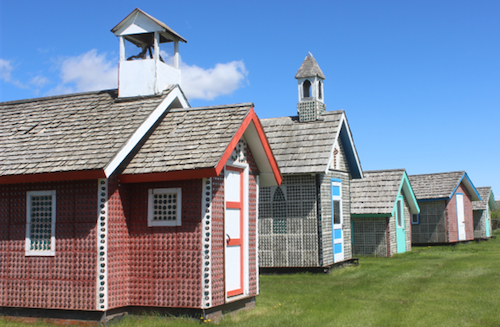
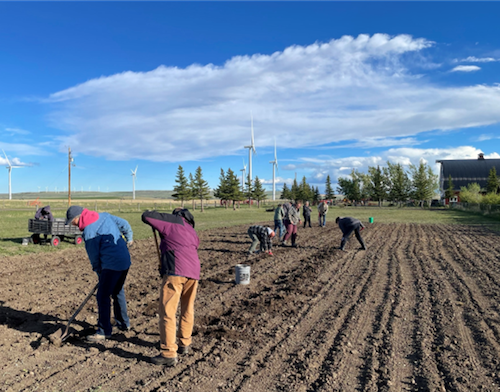

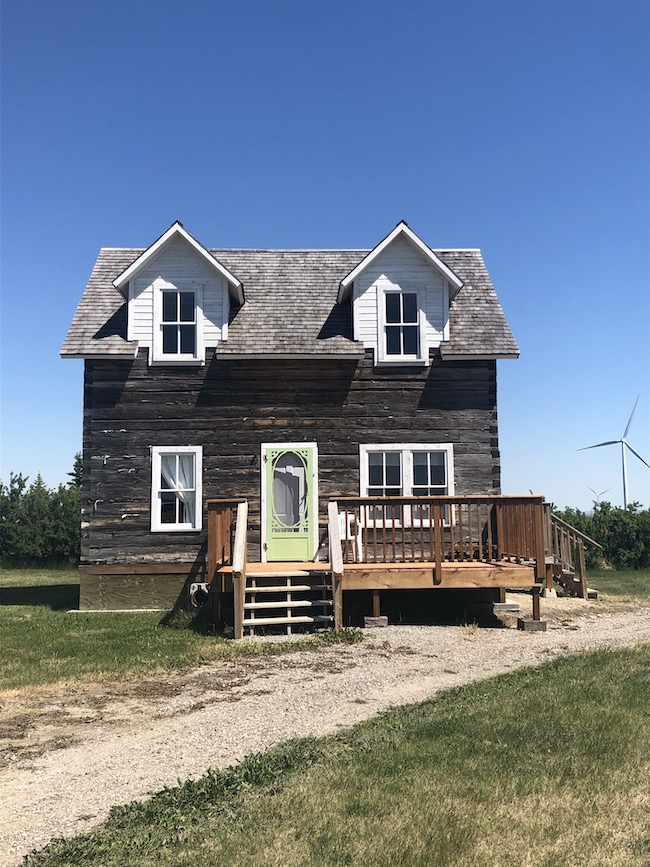
8. Cyr House In 1897, a gentleman named Damas Cyr built this log house near Chipman Creek southwest of Pincher Creek. The house was lived in until 1960. The Cyr House was donated by Mick Bonertz and moved to Heritage Acres in 2015. During winter of 2020, renovations were completed with finishing touches during spring 2021. The Grand Opening was on July 3rd, 2021. The objective of this transformation is to provide an educational opportunity for guests. Inside numerous artifacts from our collection show what life was like for our earlier settlers in Southern Alberta. Located behind Ashvale School.

9. Threshing Camp Before the modern combine, harvesting required a lot of manpower — reaping, gathering, and threshing were all done by hand or with supervised machines — which meant there were more workers who needed beds and food. Therefore, cookshacks and bunkhouses were built to make the extensive days of harvest more bearable. These shacks were hauled up to fields and acted as the headquarters and a rest area during the threshing season. These shacks were each donated in the past few years from numerous locations. We are currently working to update these displays with more historical signage! Located between the Cyr House and Trappers Cabin.
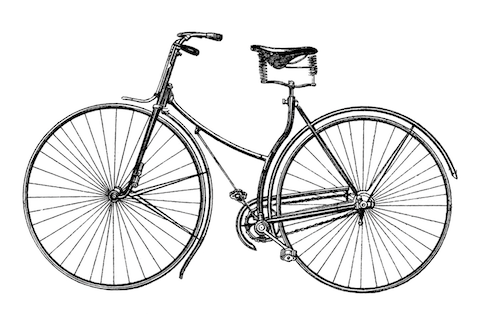
10. Bicycle Shop More information coming soon!
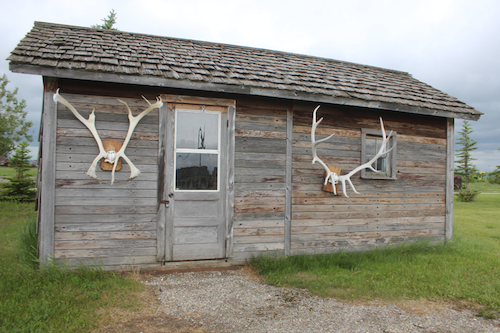
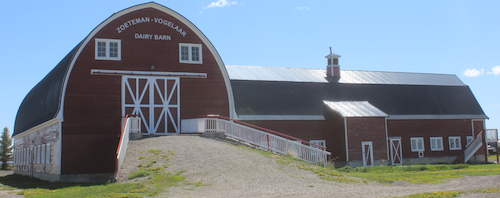

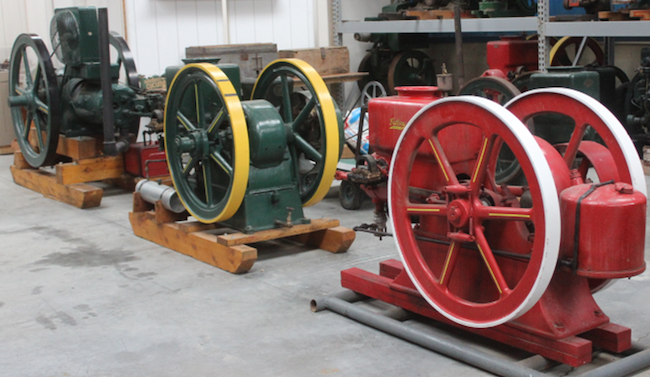
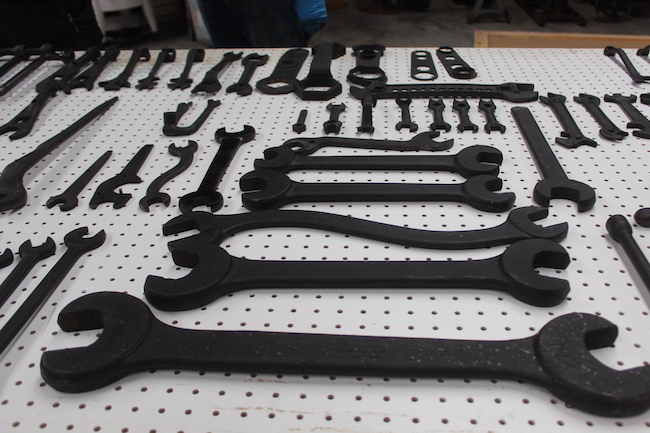
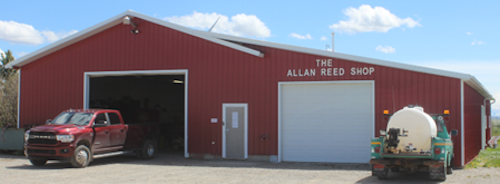
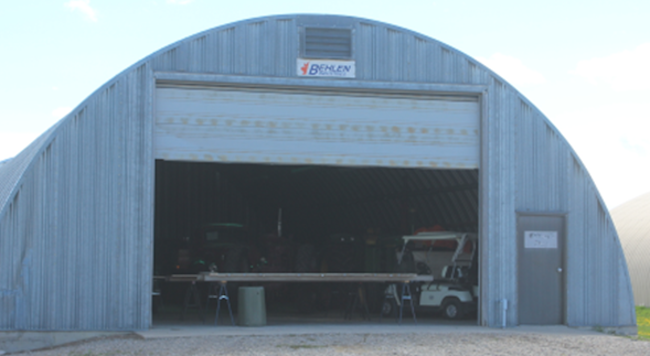
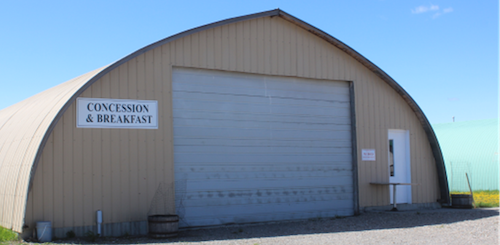
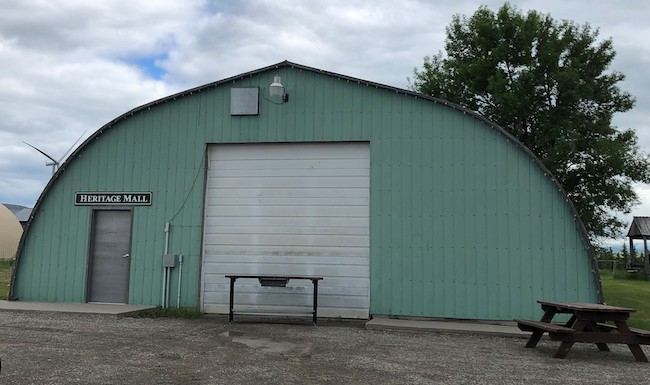
17. Heritage Display Building Inside this green Quonset, storyboards depict the history of the making of Heritage Acres since founding in 1988. A new display of Vintage Sewing Machines is opening soon! Located between the Concession and Summerview Hall.

![]() 18. Summerview Hall This hall was built in 1950 in the Summerview District by the Summerview Community Society for a cost of $3400.00. It was originally used as a hall for district for dances, meetings, family reunions, showers, and weddings. At that time it was a central gathering place for rural community members. The building was moved to Heritage Acres in 1994. In a regular season, we serve locally made pies, and ice cream during many of our special events. It also holds an Automatic External Defibrillator, bathrooms, and a First Aid kit. Summerview Hall sits beside Heritage Mall.
18. Summerview Hall This hall was built in 1950 in the Summerview District by the Summerview Community Society for a cost of $3400.00. It was originally used as a hall for district for dances, meetings, family reunions, showers, and weddings. At that time it was a central gathering place for rural community members. The building was moved to Heritage Acres in 1994. In a regular season, we serve locally made pies, and ice cream during many of our special events. It also holds an Automatic External Defibrillator, bathrooms, and a First Aid kit. Summerview Hall sits beside Heritage Mall.

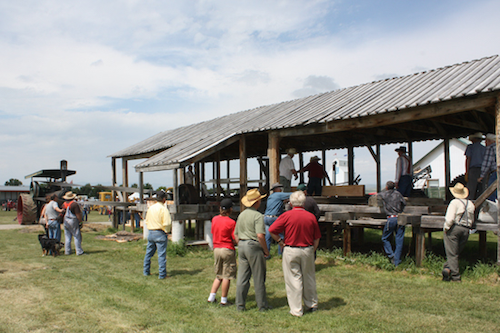

![]() 20. Heritage Station Heritage Station was moved to Heritage Acres in 2009 from Olds, AB, and was originally a golf clubhouse. This building is the home to a detailed miniature railroad track intended to represent southwestern Alberta. The model railroad track has an HO gauge that allows the little trains to wind through tiny prairie communities, mountain tunnels, past wind turbines and over bridges. Many volunteer hours have been put into making and maintaining this display. The grand opening of Heritage Station was in 2010 during the Annual Show. Bathrooms are available here. Located across from Summerview Hall.
20. Heritage Station Heritage Station was moved to Heritage Acres in 2009 from Olds, AB, and was originally a golf clubhouse. This building is the home to a detailed miniature railroad track intended to represent southwestern Alberta. The model railroad track has an HO gauge that allows the little trains to wind through tiny prairie communities, mountain tunnels, past wind turbines and over bridges. Many volunteer hours have been put into making and maintaining this display. The grand opening of Heritage Station was in 2010 during the Annual Show. Bathrooms are available here. Located across from Summerview Hall.

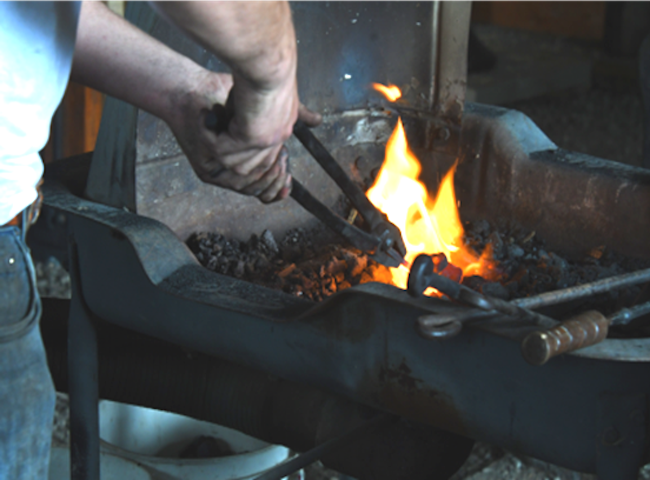
21. Blacksmith Shop The Blacksmith Shop was built in 1904, and originally sat north of Main Street near the Pincher Creek in the town of Pincher Creek. Heritage Acres is fortunate to have a working blacksmith shop with a coal fired forge. Inside a stationary engine powers a belt that drives a trip hammer and drill press. Keep an eye out for opportunities later this summer to sign up for Knife Making Courses! Located between Heritage Station and the Doukhobor Barn.
Watch the Global News coverage of the Grand Opening.
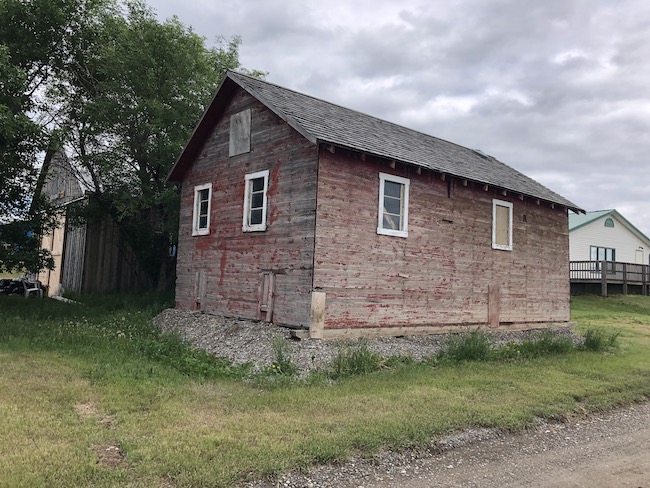
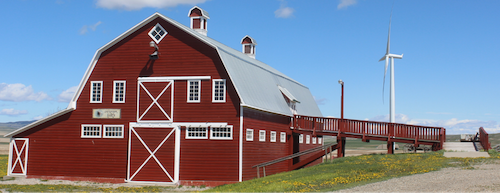
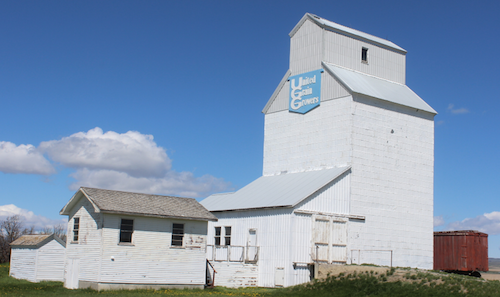
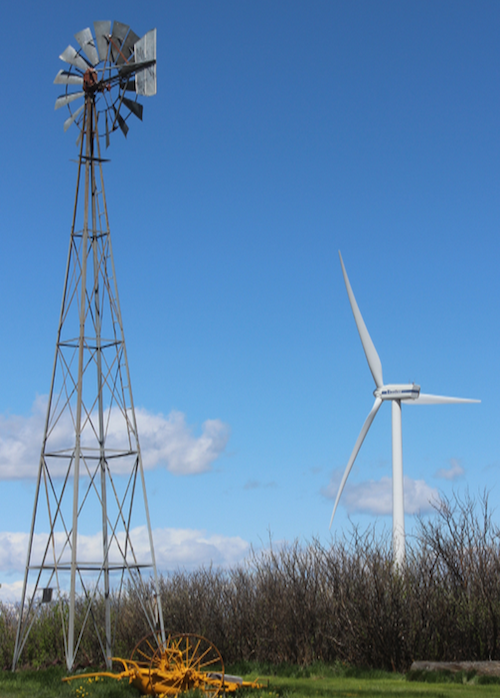
Facility Rentals
Planning a wedding, 4-H event, family reunion, anniversary, or birthday? Well we have the space for you!
The following facilities are available for rent:
Jumbo Valley Church
Summerview Hall
Doukhobor Barn loft
Zoeteman/Vogelaar Barn loft
Or, grounds only
Call us at 403-627-2082 for fees and booking information!
Volunteering
The work you see before you has been accomplished by a dedicated group of volunteers. If you would like to join this incredible group of history buffs and agricultural community members, stop by the Snyder house for more information.
Volunteer Positions Available:
- Grass trimming and mowing
- Weeding the Victory Garden
- Hedge and tree trimming
- Painting the Snyder House
- Site clean up
